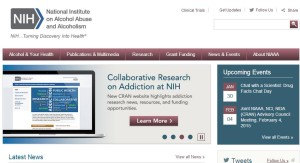
Researchers at the NIH in Bethesda, Maryland, are testing a possible new treatment to help heavy drinkers. The treatment has the potential to help alcohol abusers cut back on the amount they consume. Using a replica of a fully stocked bar where everything looks real – from the alcohol bottles to the taps – the researchers are testing to see how a hormone called ghrelin that sparks people’s appetite for food also affects their desire for alcohol, and if blocking it helps.
“The goal is to create almost a real-world environment, but to control it very strictly,” said lead researcher Dr. Lorenzo Leggio.
The researchers theorize that sitting in the dimly lit bar-laboratory setting should cue the volunteers’ brains to crave a drink, and help determine if the experimental pill counters that urge. The real alcohol is locked in the hospital pharmacy, ready to send over for the extra temptation of smell — and to test how safe the drug is if people drink anyway.
NIH’s bar lab is one of about a dozen versions around the country where the focus is on ghrelin. This hormone is produced in the stomach and controls appetite via receptors in the brain. There’s overlap between receptors that fuel overeating and alcohol craving in the brain’s reward system, explained Leggio.
In a study published this fall, his team gave 45 heavy-drinking volunteers different doses of ghrelin, and their urge to drink rose along with the extra hormone.
He is now testing whether blocking ghrelin’s action also blocks those cravings, using an experimental drug originally developed for diabetes but never sold. They want to ensure mixing alcohol with the drug is safe in the first phase of the testing, however, researchers also measure cravings of volunteers. The volunteers are hooked to a blood pressure monitor in the tiny bar-lab, smell a favorite drink. Initial safety results are expected this spring.
The NIH hopes that in the future, there will be a simple blood test that tells what medication/ treatment will work best for each individual seeking help. However, they have continually stressed that medication works best in conjunction with other forms of treatment and therapy, as a pill alone rarely, if ever, solve the problem.


